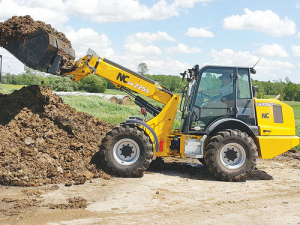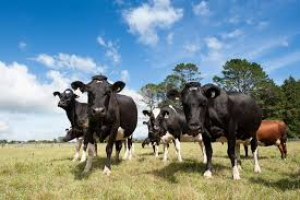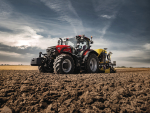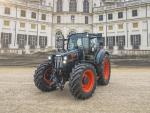In the 1980s and 90s pivot steer telehandlers were popular with livestock farmers, who preferred their improved visibility; they weren’t always looking for large lift and reach capacities but did want to be able to place loads precisely in tight spots.
Over time, the more common side boom machines gained popularity for their bigger lift capacities, and the pivot steer layout became a rare beast.
Fast forward to 2013, when the Northern Ireland company NC Engineering launched a clean-sheet design for a pivot steer handler with a centrally mounted boom; now at least 300 units are working in the field.
The FH225 offers lift capacity of 2400kg, lift height of 4.7m and forward reach of 2.84m.
The drive train has a Tier3B, 4-cylinder Deutz engine with 100hp and 410Nm torque, coupled to a Dana-Spicer 6F-3R speed powershift transmission, available in 30 or 40km/h configuration, and limited slip differentials on both axles.
Said to be more capable than hydrostatic layouts, particularly on slopes or steep silage clamps, the FH 225 has permanent 4WD, planetary hub reductions and oil-immersed brakes on both axles. Direction control and powershift steps are easily activated by push-button on the main joystick control.
The centrally mounted ROPS/FOPS cab is set high on the machine and gives far better visibility than side-boom machines, by eliminating blind spots.
Said to be spacious, with easy access to the air suspension seat from either door, the layout is ergonomically designed for long productive hours, with features like the adjustable steering column, armrest mounted joystick and fully adjustable driving position. Standard fitments include tinted glass, heated front and rear windscreens with wipers, CD/radio and a load moment indicator for safety.
Hydraulic power is supplied via a load sensing/on-demand Rexroth hydraulic system, delivering 91L/min, which should help with fuel consumption over a long working day.
The two-stage telescopic boom is fabricated from high tensile steel and carried on nylcast wear pads for a long service life. Standard fitment is a double-acting hydraulic spool valve plumbed to the headstock to power auxiliary implements.
Fitted with 20 inch tyres, the machine utilises a 43-degree steering lock, achieved by double acting hydraulic rams, to manage an extremely tight turning circle of only 1.75m; stability and operator comfort are gained by an oscillating rear axle.
A range of options allow easy configuration to suit specific tasks -- air conditioning, boom suspension, weighing systems accurate to +/- 3%, reversing camera, tyre upgrades and preferred headstock-to-implement coupling systems.

















